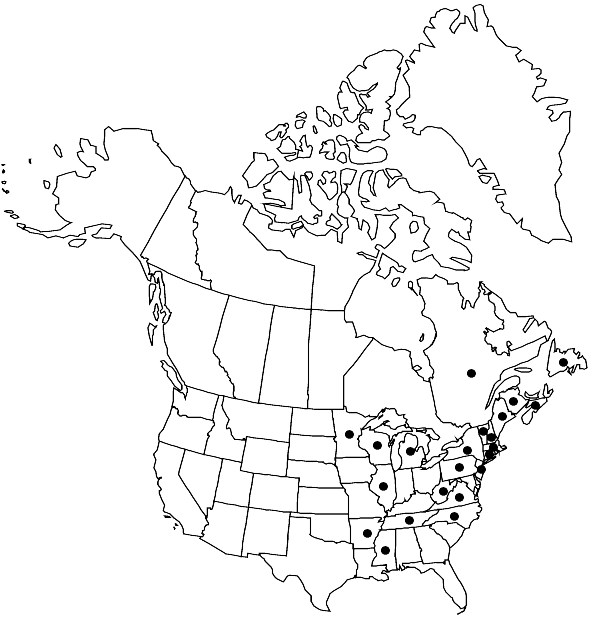Schistidium liliputanum
J. Sci. Hiroshima Univ., Ser. B, Div. 2, Bot. 16: 229. 1979,.
Plants in compact to open cushions, (dark) olivaceous or reddish brown, sometimes with rusty tones. Stems 0.5–2 cm, central strand distinct. Leaves curved, occasionally erect when dry, narrowly ovate-lanceolate to ovate-lanceolate, keeled distally, 1.3–2.1 mm, 1-stratose, occasionally 2-stratose in striae distally; margins recurved to near apex, often unequally, smooth or weakly denticulate, 2-stratose; apices acute or somewhat obtuse; costa percurrent or excurrent as a long, often flexuose, spinulose-denticulate or denticulate awn, abaxial surface smooth or weakly papillose; basal marginal cells usually short-rectangular, with transverse walls thicker than longitudinal walls; distal cells short-rectangular or rounded, 7–9 µm wide, smooth, straight or slightly sinuose. Sexual condition autoicous. Capsule yellowish brown or brown, short-cylindric, cupulate, or somewhat campanulate, 0.4–0.8 mm; exothecial cells oblate or isodiametric, often quadrate, thin-walled; stomata present; peristome patent to squarrose, 200–350 µm, brownish or pale yellow, papillose, perforated. Spores 10–12 µm, finely papillose.
Phenology: Capsules mature late spring to early summer.
Habitat: Rock in open to shaded habitats
Elevation: low to moderate elevations (100-1200 m)
Distribution

N.B., Nfld. and Labr. (Nfld.), N.S., Que., Ark., Conn., Ill., Maine, Mass., Mich., Minn., Miss., N.H., N.J., N.Y., N.C., Pa., Tenn., Vt., Va., W.Va., Wis., e Asia.
Discussion
Schistidium liliputanum is distinguished from other species of the genus by the combination of its small size, narrowly ovate-lanceolate leaves, the often flexuose, spinulose-denticulate and long awns, and the leaf basal marginal laminal cells with transverse walls thicker than longitudinal walls. The tiny, sometimes campanulate capsules, often well hidden in the perichaetial leaves, are also useful when identifying S. liliputanum.
Selected References
None.